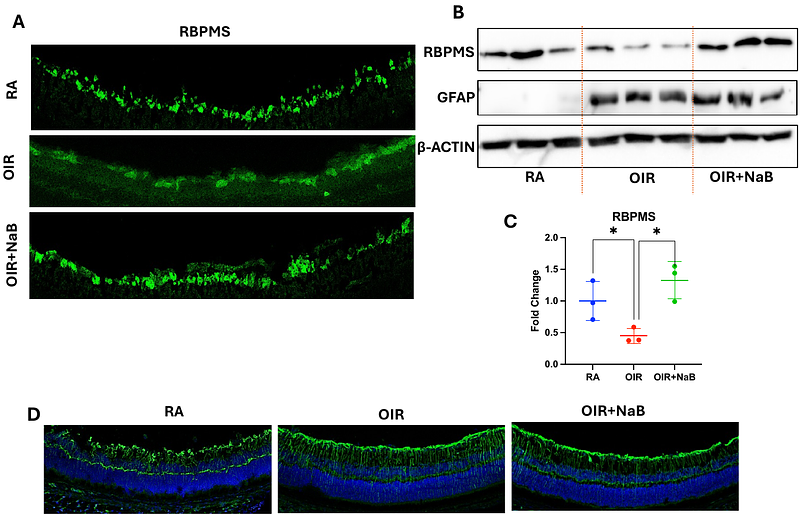Protective Effects of Butyrate on Retinal Neovascularization in Preclinical Retinopathy of Prematurity Models

Protective Effects of Butyrate on Retinal Neovascularization in Preclinical Retinopathy of Prematurity Models
Oxenrider, A.; Bui, T.; Lester, J.; Thounaojam, M. C.; Martin, P. M.; Jadeja, R. N.
AbstractRetinopathy of prematurity (ROP) remains a leading cause of childhood blindness worldwide, necessitating new therapeutic strategies. Current interventions targeting advanced disease stages often fail to prevent long-term visual impairment. This study investigates the potential of sodium butyrate (NaB), an orally administered short-chain fatty acid, in preclinical models of ROP. Using the oxygen-induced retinopathy (OIR) mouse model, we demonstrate that daily oral NaB supplementation significantly protects against pathological angiogenesis, impacting not only vascular but also neuronal and microglial pathologies in the inner retina. Notably, NaB shows efficacy in early-phase ROP intervention, as evidenced by studies in post-natal day 9 (P9) OIR mice and a novel hyperglycemia-associated retinopathy (HAR) model, which mimics the hyperglycemic conditions of many premature infants. These findings highlight NaB as a promising alternative or adjunct therapy to current anti-VEGF treatments, offering protection across multiple retinal cell types and stages of ROP development. The study underscores the need for further research to elucidate the specific mechanisms of NaB\'s action, paving the way for its potential clinical application in ROP management. This research marks the first exploration of butyrate as a preventative and therapeutic agent for ROP, setting the stage for additional preclinical evaluations and optimization.


